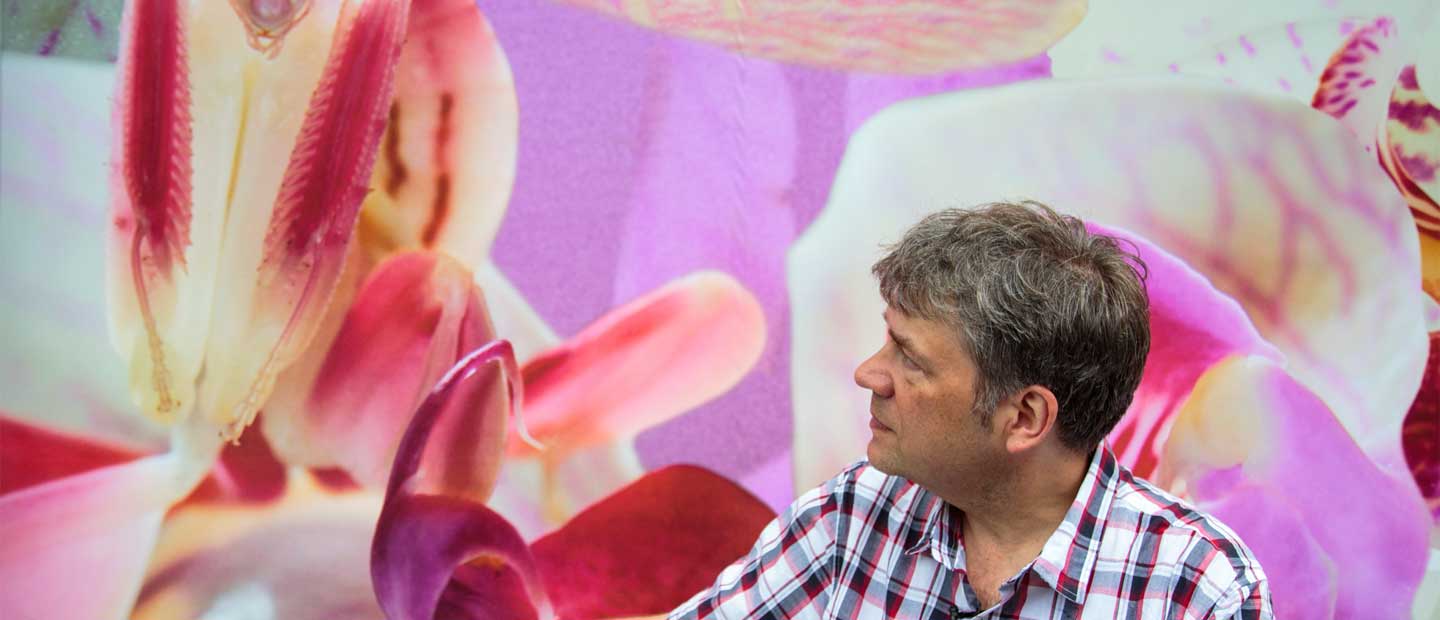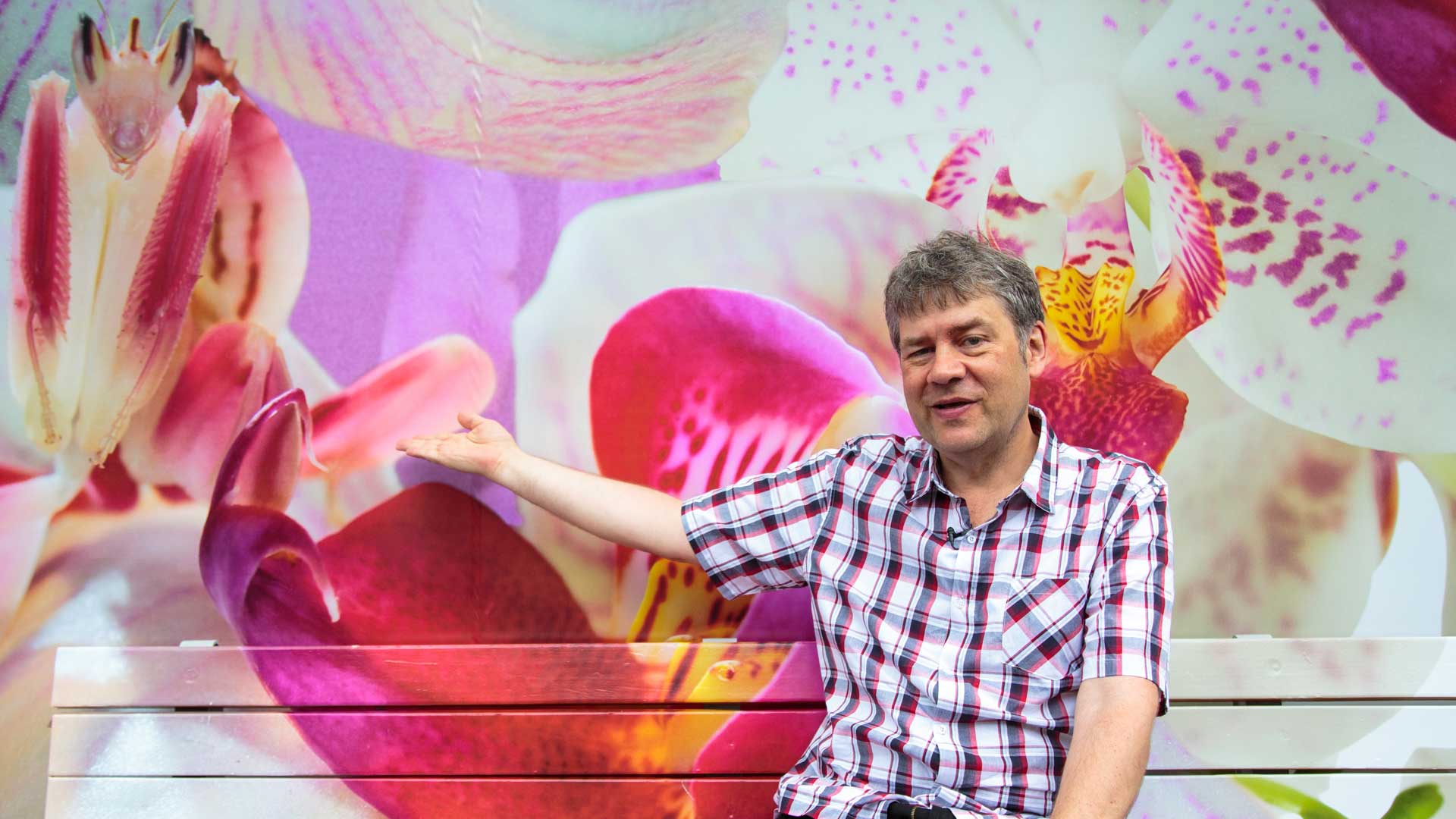Bug Lab is divided into several major themes (Display, Flight, Venom, Exoskeleton, Swarms and Silk) and today we’re taking a closer look at the star of our Display section, the beautiful and deadly orchid mantis (Hymenopus coronatus). Our model was lovingly built in large scale by the incredibly talented people at Weta Workshop and was based on real specimens.
The orchid mantis is found in south-east Asian rain forests. As the name suggests, this insect looks like a flower. Early accounts of the orchid mantis even described it as a flower that walks! Like any other mantis, the orchid mantis is a predator. If an insect gets too close, she’ll snatch them out of the air with her modified front legs in less time than it takes for you to blink your eye.






